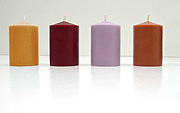
FRIDAY, Nov. 23 (HealthDay News) — Winter months can be rough for people who are allergic to mold spores and dust mites, and holiday decorations may contribute to the problem.
“During the winter, families spend more time indoors, exposing allergic individuals to allergens and irritants like dust mites, pet dander, smoke, household sprays and chemicals, and gas fumes — any of which can make their lives miserable,” Dr. William Reisacher, director of the Allergy Center at NewYork-Presbyterian Hospital/Weill Cornell Medical Center, said in a medical center news release.
One way to prevent a winter allergy flare-up is to keep holiday decorations mold-free.
“Mold spores can cause additional problems compared to pollen allergy because mold grows anywhere and needs little more than moisture and oxygen to thrive,” said Dr. Rachel Miller, director of allergy and immunology at the Morgan Stanley Children’s Hospital, which is part of the medical center.
The experts recommended several other ways to keep mold and dust allergies in check, including:
- Turn on exhaust fans when taking a shower or cooking to reduce humidity and odors.
- Use a HEPA vacuum on carpets to reduce pet allergens and remove dust mites.
- Wash your hands after playing with pets.
- Avoid touching your face to reduce exposure to winter viruses.
- Wash sheets and pajamas in hot water (about 130 degrees) to kill dust mites.
- Remove carpets, rugs and plants from your bedroom, and do not allow pets to enter. Try placing an allergenic barrier on your pillows and mattress.
- Live Christmas trees should be sprayed with water before they are brought inside. Be sure to remove the dust from all other holiday decorations.
- Make sure your furnace fan is always on and install high-efficiency furnace filters, which eliminate 30 times more allergens.
- Using a humidifier or dehumidifier, maintain indoor humidity levels of 30 percent to 40 percent.
- Follow manufacturer directions on when to change the water and filters in your humidifier.
- Examine your home for signs of mold and identify areas that smell musty or may be at risk for mold growth.
More information
The American College of Allergy, Asthma & Immunology provides additional tips on how to manage winter allergies.

